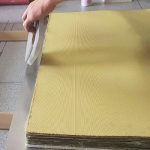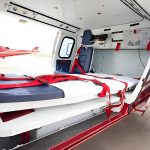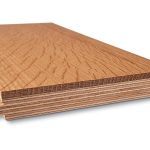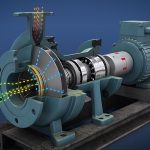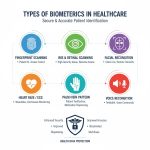Bone Graft Substitutes: A Comprehensive Analysis of Market Dynamics, Trends, and Regional Insights
The bone graft substitutes market is poised for significant growth, driven by technological advancements, increasing prevalence of bone-related disorders, and a shift towards minimally invasive surgical procedures. While challenges such as high costs and regulatory hurdles persist, the market offers ample opportunities for innovation and expansion. North America remains at the forefront of this dynamic market, setting the stage for continued advancements and improved patient outcomes. As research and development efforts intensify and new products enter the market, bone graft substitutes are set to play an increasingly vital role in modern healthcare, offering hope and healing to millions of patients worldwide.
Overview of Bone Graft Substitutes
Bone graft substitutes are innovative medical materials designed to replace or augment missing bone, supporting the body’s natural bone healing and regeneration processes. These substitutes are widely used in orthopedic surgeries, dental procedures, and trauma care, offering alternatives to traditional autografts and allografts. The growing prevalence of bone-related disorders, such as osteoporosis and bone fractures, coupled with an aging global population, is driving the demand for bone graft substitutes. Additionally, advancements in biomaterials and tissue engineering have led to the development of more effective and biocompatible products, further fueling market growth. The increasing number of spinal fusion surgeries and rising awareness about minimally invasive procedures are also significant factors propelling the bone graft substitutes market forward.
Get a Sample Copy:- https://www.vantagemarketresearch.com/bone-graft-substitutes-market-1791/request-sample
Top 11 Key Players
- Aerospace Lubricants Inc. (U.S.)
- Eastman Chemical Company (U.S.)
- Exxon Mobil Corporation (U.S.)
- Jet-Lube (Whitmore Manufacturing LLC) (U.S.)
- LANXESS (Germany)
- LUKOIL (Russia)
- NYCO (France)
- Nye Lubricants Inc. (FUCHS PETROLUB) (Germany)
- ROCOL (UK)
- Royal Dutch Shell PLC (UK)
- The Chemours Company (U.S.)
Market Dynamics
The bone graft substitutes market is characterized by dynamic shifts influenced by technological advancements, changing patient demographics, and evolving healthcare policies. One of the primary drivers is the rising incidence of musculoskeletal disorders and traumatic injuries, which necessitate effective bone repair solutions. The market is also witnessing a surge in demand due to the limitations associated with traditional bone grafting techniques, such as donor site morbidity and limited graft availability. As a result, synthetic and biologic substitutes are gaining traction, offering improved safety profiles and reduced risk of disease transmission. Furthermore, the integration of advanced manufacturing techniques, such as 3D printing and nanotechnology, is enabling the production of customized grafts tailored to individual patient needs. However, the market is not without its challenges. High costs associated with advanced bone graft substitutes, stringent regulatory requirements, and reimbursement issues can hinder market expansion. Despite these obstacles, ongoing research and development activities, coupled with strategic collaborations among key industry players, are expected to create new growth opportunities in the coming years.
Market Segmentation
By Material Type
- Allograft (12.3%)
- Synthetic (43.1%)
- Composites (28.3%)
- Polymers (14.1%)
- Bone Morphogenic Proteins (BMP) (2.2%)
By Application
- Craniomaxillofacial
- Dental
- Foot & Ankle
- Joint Reconstruction
- Long Bone
- Spinal Fusion
By Region
- North America
- Europe
- Asia Pacific
- Latin America
- Middle East & Africa
Top Trends
The bone graft substitutes market is experiencing several notable trends that are shaping its future trajectory. One of the most significant trends is the increasing adoption of synthetic bone grafts, which offer consistent quality, unlimited supply, and reduced risk of immunogenic reactions. These synthetic options, often composed of materials like hydroxyapatite, tricalcium phosphate, and bioactive glass, are being preferred over traditional allografts and autografts. Another emerging trend is the use of biologically active substitutes, such as growth factor-enhanced grafts and stem cell-based products, which promote faster and more effective bone regeneration. The integration of 3D printing technology is revolutionizing the market by enabling the creation of patient-specific grafts with complex geometries, improving surgical outcomes. Additionally, there is a growing focus on minimally invasive surgical techniques, which reduce patient recovery time and hospital stays. The market is also witnessing increased investment in research and development, leading to the introduction of next-generation products with enhanced osteoconductive and osteoinductive properties. As healthcare providers and patients become more aware of the benefits of bone graft substitutes, the market is expected to continue its upward trajectory.
Top Report Findings
- The global bone graft substitutes market is projected to grow at a robust CAGR over the next decade.
- Synthetic bone grafts are gaining significant market share due to their safety and availability.
- North America remains the largest regional market, driven by advanced healthcare infrastructure and high adoption rates.
- The demand for minimally invasive procedures is boosting the use of bone graft substitutes.
- Key players are focusing on strategic partnerships and product innovation to strengthen their market position.
- Regulatory approvals for new products are accelerating market entry and competition.
- The use of 3D printing and nanotechnology is enhancing product customization and performance.
- Rising healthcare expenditure and increasing awareness are supporting market growth.
Challenges
Despite the promising outlook, the bone graft substitutes market faces several challenges that could impede its growth. One of the primary challenges is the high cost associated with advanced bone graft substitutes, which can limit their accessibility, especially in developing regions. Additionally, the stringent regulatory landscape governing the approval of new products can delay market entry and increase development costs for manufacturers. There are also concerns regarding the long-term safety and efficacy of some synthetic and biologic substitutes, which may hinder their widespread adoption. Reimbursement issues and lack of standardized clinical guidelines further complicate the market scenario. Moreover, the risk of immune reactions and disease transmission, although lower than traditional grafts, still exists with certain products, necessitating continuous monitoring and improvement.
Opportunities
Amidst the challenges, the bone graft substitutes market presents numerous opportunities for growth and innovation. The increasing prevalence of bone-related disorders and the rising number of orthopedic and dental surgeries worldwide create a substantial demand for effective bone repair solutions. Technological advancements, such as the development of next-generation biomaterials and the integration of 3D printing, offer opportunities for product differentiation and customization. Expanding healthcare infrastructure in emerging markets and growing awareness about the benefits of bone graft substitutes are expected to drive market penetration. Strategic collaborations between research institutions, healthcare providers, and industry players can accelerate the development and commercialization of innovative products. Furthermore, favorable government initiatives and funding for regenerative medicine research are likely to support market expansion in the coming years.
Key Questions Answered in the Bone Graft Substitutes Report
- What are bone graft substitutes, and how do they differ from traditional bone grafts?
- What are the key factors driving the growth of the bone graft substitutes market?
- Which types of bone graft substitutes are most commonly used in clinical practice?
- What are the major challenges faced by manufacturers and healthcare providers in this market?
- How are technological advancements, such as 3D printing and nanotechnology, impacting the market?
- What are the latest trends in product development and innovation within the bone graft substitutes market?
- How does the regulatory environment affect the approval and commercialization of new products?
- What is the current market size and forecast for bone graft substitutes in North America?
Regional Analysis: Focus on North America
North America stands out as the leading region in the bone graft substitutes market, driven by a combination of advanced healthcare infrastructure, high healthcare expenditure, and a strong focus on research and development. The United States, in particular, accounts for the largest share of the regional market, owing to the high prevalence of orthopedic conditions, a growing geriatric population, and the widespread adoption of innovative medical technologies. The presence of major industry players and academic research institutions further accelerates product development and commercialization in the region. Additionally, favorable reimbursement policies and regulatory support for new product approvals contribute to the robust growth of the market. The increasing number of spinal fusion and joint reconstruction surgeries, coupled with rising awareness about minimally invasive procedures, is fueling the demand for bone graft substitutes. Canada also plays a significant role in the regional market, with a focus on improving access to advanced orthopedic care and investing in healthcare infrastructure. As North America continues to lead in terms of innovation and adoption of bone graft substitutes, the region is expected to maintain its dominant position in the global market over the coming years.
![[Market Research Reports] – Research Google News Blog | VMR.Biz](https://www.vmr.biz/wp-content/uploads/2022/12/logo-removebg-preview.png)


